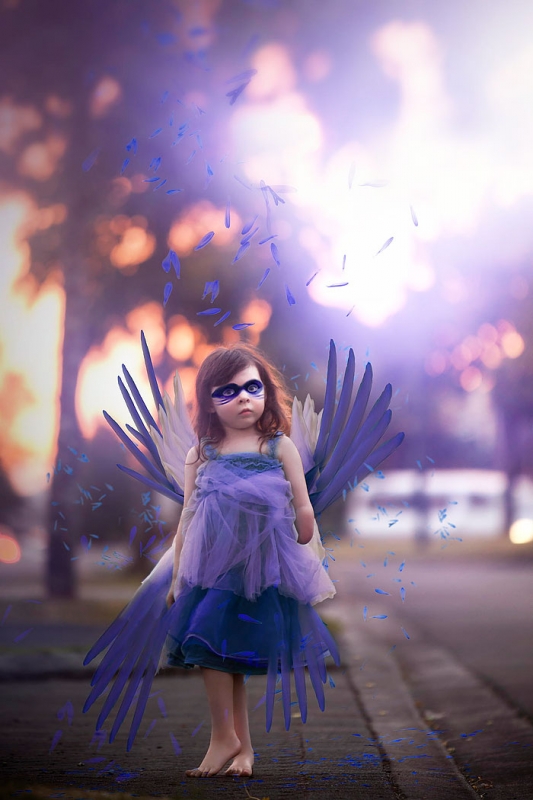September 14, 2014 - 17:16

I saw this photoset last week and was immediatly struck by the connection to our projects with Reva. A mother in New Zealand took these pictures of her 4 year old who has only her right hand and suffered from Hirschsprung's Disease as an infant. The mother/photographer uses technology to create insane environments around her daughter and the pictures are simply stunning. Not only did this project evoke thoughts about how meaningful this must have been to work on as a mother but it made me think about how we portray children and their imaginations. "For both of us, it was first and foremost a way for us to bond," Spring told Mic. "For Violet, I hope that she sees herself open to endless possibilities in the future."
These pictures are so appropriate for a four year old girl. They capture all the fantastical dreams she probably has as a little princess. She looks beautiful and happy. At face value this is just a really amazing set of images. These pictures defy the stereotype that young girl will face about her appearance for the rest of her life. I hope that this is just one example of how her family is teaching her to ignore the ableist comments and boundaries from a very young age.
One other thing to note is that in the final picture her mother has switched her arms. She writes "Photographer's Note: the last image of the Giraffe showing my daughter with the wrong limb difference is intentional for creative purposes and continuity of light and narrative." I thought we might talk more in class about the ramfications of that and how that connects with our questioning of ethical depictions.


Comments
Ethics, Gender, and Disability – The intersections
Submitted by Hummingbird on September 21, 2014 - 12:36 Permalink
I was struck by what Riva said last week about these photos – about the way they seemed to distract from or overcompensate for the daughter's missing limb. I am thinking of the ways the photographer's close relationship to the subject (her daughter) complicates her portrayal. The way the mother/photographer is most likely the person who gives consent for her daughter, since her daughter is only four, and the way her own desire to produce something aesthetic may be impacted by and may impact the way she gives consent for her daughter. Something about that feels not entirely ethical for me – I wonder whether the photographer/mother's desire to produce art may hinder or compromise her ability to be her daughter's best advocate.